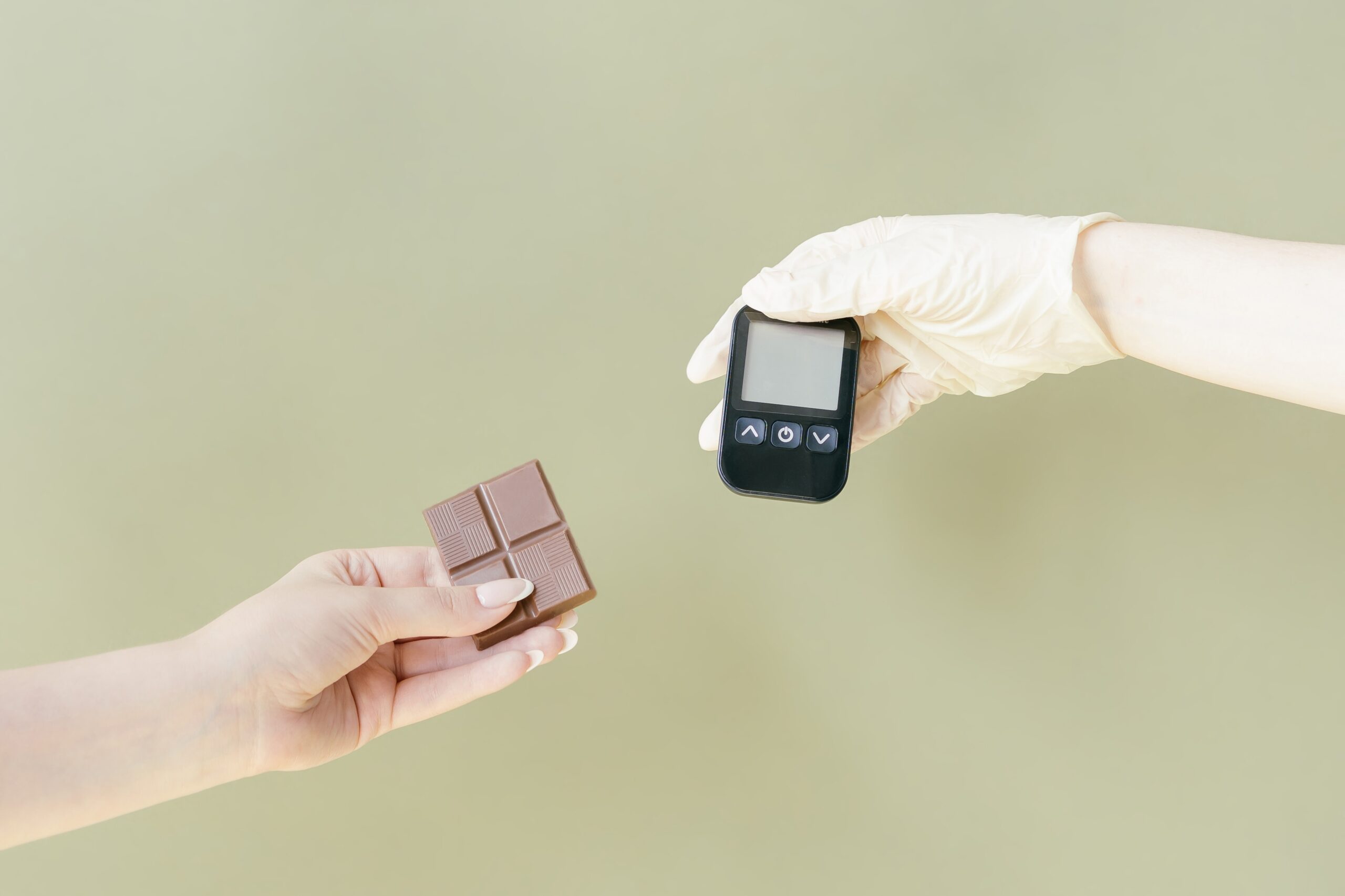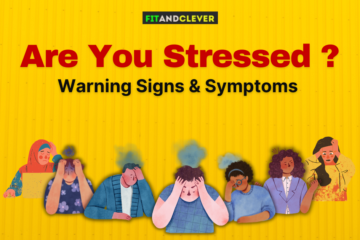The Fascinating Science of Diabetes & what if you have it ? Early Signs & Symptoms

Backdrop | Types of Diabetes | Type 1 diabetes | Type 2 diabetes | Gestational Diabetes | Early Signs and Symptoms of Diabetes | Quiz: Do you have diabetes?
Diabetes is a manageable condition, but if left untreated can cause serious damage to your body. What if you have diabetes, but either you don’t know or ignoring your symptoms. If you’re concerned that you might be experiencing some of the symptoms of diabetes, or know that you may be at risk of the condition, this article will provide you valuable information about the signals your body is exhibiting.
“If you’re proactive, you focus on preparing. If you’re reactive, you end up focusing on repairing.”
― John C. Maxwell

Backdrop
Before diving deep into the early warning signs and signals it would be a lot better to explain a little bit about this disease. Diabetes may broadly be classified as a category of disorders wherein a person has either high blood glucose levels due to insufficient production of insulin in one’s body or the body fails to respond to the insulin in the required way or exhibits a combination of both.
Diabetes could be a lifelong condition and it would be surprising to know that 382 million people across the world were suffering from this disorder in the year 2013. The number of people with diabetes rose from 108 million in 1980 to 422 million in 2014. (World Health Organization [WHO], 2020). Enjoying my article ? Here is a treat for you.
Facts & Figures
- An estimated 700 million adults worldwide will have diabetes by 2045. (International Diabetes Federation [IDF], 2020)
- China has the highest number of diabetes accounts worldwide, with 116 million people with diabetes. Following China is India (77 million people with diabetes) and then the United States (31 million people with diabetes). (IDF Diabetes Atlas, 2019)
- More than 34 million Americans have diabetes, which is nearly 11% of the U.S. population. (Centers for Disease Control and Prevention [CDC], 2020)
- Every 17 seconds, an American is diagnosed with diabetes. (The American Journal of Managed Care, 2018)
- There are 1.5 million new cases of diabetes in the United States each year. (American Diabetes Association [ADA], 2020)
- Of the 34.2 million U.S. adults with diabetes, approximately 7.3 million of those are undiagnosed. (ADA, 2020)
- An estimated 88 million adults have prediabetes, 34.5% of the U.S. adult population. (CDC, 2020)
- Adults with diabetes have a two- to three-fold increased risk of heart attacks and strokes(1).
- Combined with reduced blood flow, neuropathy (nerve damage) in the feet increases the chance of foot ulcers, infection and eventual need for limb amputation.
- Diabetic retinopathy is an important cause of blindness, and occurs as a result of long-term accumulated damage to the small blood vessels in the retina. Diabetes is the cause of 2.6% of global blindness(2).
- Diabetes is among the leading causes of kidney failure(3).
- 79% of adults with diabetes were living in low- and middle-income countries
- 1 in 5 of the people who are above 65 years old have diabetes
- 1 in 2 (232 million) people with diabetes were undiagnosed
- Diabetes caused 4.2 million deaths
- Diabetes caused at least USD 760 billion dollars in health expenditure in 2019 – 10% of total spending on adults
Types of Diabetes
Diabetes is very often classified as Type 1 and Type 2, but there is a third type to it as well which will be discussed.
Type 1 diabetes
In Type 1 diabetes, the body stops the production of insulin. This type of diabetes is comparatively rarer, and only 1% to 10% of people suffer from this type of ailment.
One has to depend on insulin injections for the rest of their life and follow a specific diet regime. They also have to monitor their blood glucose levels by carrying out blood tests at regular intervals.
It is believed to be an autoimmune disease where the immune system mistakenly attacks and destroys the beta cells in our pancreas that make insulin. The damage may or may not be permanent and the cause of attack is unknown. It can develop at any age, but occurs most commonly in children, adolescents and people under 40 years of age
1.6 million Americans have Type 1 diabetes, which includes 187,000 children and adolescents.
(ADA, 2020)
Facts
- 1.6 million Americans have Type 1 diabetes, which includes 187,000 children and adolescents. (ADA, 2020)
- More than 1.1 million children and adolescents are living with type 1 diabetes
Type 2 diabetes
It is a lot more prevalent and nearly 90% of people suffer from it. In this type the body does, produce insulin but not in adequate quantities, or the body cells develop resistance to insulin – you’ve lost that sensitivity.
Genetic, environmental reasons and sedentary lifestyle are thought to play a role. One can keep a check on symptoms of type 2 diabetes by weight management, a healthy diet, exercising regularly, and monitoring one’s blood glucose levels at regular intervals.
Approximately 90% to 95% of all U.S. diabetes cases are Type 2. (CDC, 2019)
“If the system gets overworked – eating the wrong things, eating too frequently, too much – the system gets worn out and we lose the sensitivity to it”
Dr Jenna Macciochi, (Doctor of Immunology at the University of Sussex)
Facts
- The proportion of people with type 2 diabetes is increasing in most countries
- 374 million people are at increased risk of developing type 2 diabetes
- Approximately 90% to 95% of all U.S. diabetes cases are Type 2. (CDC, 2019)
Gestational Diabetes
This type of diabetes affects women during pregnancy. Glucose levels of pregnant women at times becomes high and their insulin production is insufficient to transport this glucose into their cells. This is a temporary condition and can be controlled by means of diet and low profile exercises.
If left untreated, it can cause complications to both the mother and child. It usually disappears after pregnancy but affected women and their children may develop again later in life.
The key to prevent this from happening it again is by making sure that one consumes a low cholesterol and low sugar diet.
Half of the women who have gestational diabetes will go on to develop Type 2 diabetes later in life.
(CDC, 2019)
Facts
- About 7% of pregnant women develop gestational diabetes. (March of Dimes, 2019)
- More than 20 million live births (1 in 6 live births) are affected by diabetes during pregnancy

Early Signs and Symptoms of Diabetes
Now coming back to the point where it all started. What if you have Diabetes!
General Symptoms
- Excessive thirst and hunger- Lack of insulin or its resistance, blocks the transfer of glucose into your cells. Thus, causing lack of energy which triggers thirst and hunger.
- Frequent urination– Since the glucose remains inside the blood, the kidney’s flushes that extra glucose absorbed from the blood. This in turn causes more peeing and more thirst. Trust me, i have seen people going through hell. Diabetes is among the leading causes of kidney failure
- Dry mouth, itchy skin-The excessive peeing could lead to dehydration. One could feel a dryness in the mouth and itchiness in the skin.
- Blurry vision-Changing fluid levels in your body could make the lenses in your eyes swell up. They change shape and can’t focus. Diabetic retinopathy is an important cause of blindness, and occurs as a result of long-term accumulated damage to the small blood vessels in the retina. Diabetes is the cause of 2.6% of global blindness(2)
- Slow-healing wounds-Since the unabsorbed glucose remains in the blood stream, any wound on the surface of the body will attract micro organisms faster than normal and this slows down the healing process. Combined with reduced blood flow, neuropathy (nerve damage) in the feet increases the chance of foot ulcers, infection and eventual need for limb amputation
“Symptoms for type 1 diabetes often develop very fast, in a matter of days, they’re much more severe, too. But with type 2 diabetes you may not even notice, because symptoms can be very subtle.” Dr Jenna Macciochi,
Specific symptoms of Type 1 Diabetes
- Unplanned weight loss-If your body can’t get enough energy from your food, it will start burning your muscle and fat for producing energy instead. You may end up losing weight though you haven’t changed your diet.
- Nausea and vomiting.-When your body has no choice but to burn fat, it makes ketones which build up in your blood to hazardous levels, a condition called diabetic ketoacidosis. Ketones can make you feel sick to your stomach. It can occur when you have very high blood sugars, but little or no insulin in your body.
Specific symptoms of Type 2 Diabetes
- Yeast infections. Both men and women can get these. Yeast is a micro-organism that feeds on glucose, so having large amount of it makes it grow exponentially. Infections can grow in any warm, moist fold of skin, including but not limited to:
- Around sexual organs
- Between the toes and fingers
- Under the female breasts
- Pain or numbness in feet or legs. This is another result of nerve damage.
- Dark patches– They can develop in the folds of skin in your armpits and neck
Quiz: Do you have diabetes?
If you’re concerned that you might be experiencing some of the symptoms of diabetes, or know that you may be at risk of the condition, this quiz should help you discover whether you are exhibiting some of the symptoms and evaluate your risk. Try this quiz to see whether you are showing any of the tell-tale signs.
The quiz consists of nine questions, looking at symptoms you may have noticed. Using the data, you will then be given advice on whether to seek help.
The only conclusive test for diabetes is a blood test. However, the quiz should give you an indication of whether to seek urgent help, or whether to raise the issue at your next GP appointment.
“Change what you can, manage what you can’t.”
― Raymond McCauley
Recommended Readings
- Diabetes prevention and treatment
- Top 10 Reasons why physical Fitness is Important for everyone.
- What if you have diabetes? Early signs & symptoms
Follow us on Facebook for more exciting posts.




1 Comment
Mental Health is a Priority: 7 Powerful Trends in 2022 · July 26, 2022 at 5:22 pm
[…] What if you have diabetes? Early signs & symptoms […]